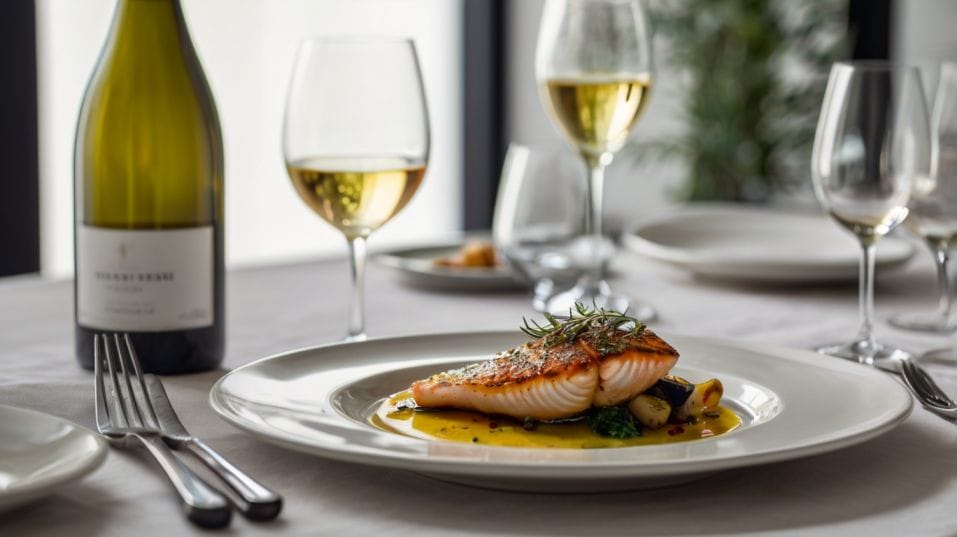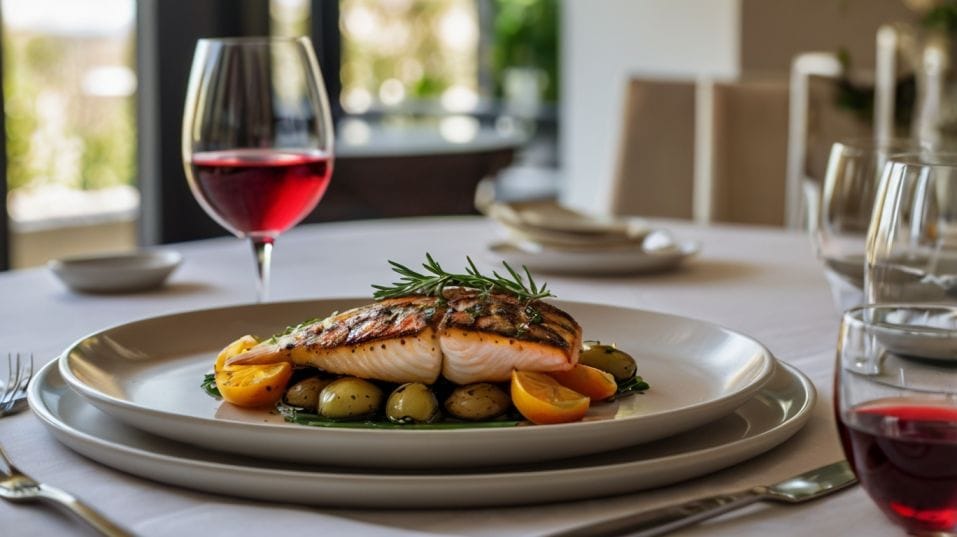White Wine Doesn’t Always Go with Fish
Forget old rules—learn how to pair wine with fish using texture, intensity, and acidity to choose bottles that truly elevate every bite.

Ever wonder why the old “white wine with fish” rule doesn’t always work? If you're just getting into wine, you’ve probably heard that pairing advice more than once.
But the truth is, fish and wine aren’t about color—they're about chemistry. The real magic lies in texture, weight, and how a wine interacts with a dish’s flavors.
Ready to break the rules and find pairings that actually work? Let’s rethink what’s in your glass.
Why the Color Rule Fails
The white-with-fish, red-with-meat guideline was born from general trends in cuisine, not hard science. Centuries ago, white wines were usually lighter and more acidic, red wines more tannic and structured.
Similarly, fish dishes tended to be subtle and lean, while red meat dishes were rich, fatty, and hearty. In that context, the rule kind of made sense.
But today, wines and dishes come in endless variations. You can find white wines that are full-bodied, oak-aged, and creamy. You can find red wines that are light, chillable, and barely tannic.
Meanwhile, fish can be raw, fried, grilled, spiced, or sauced. One-size-fits-all advice doesn’t get you far. If you want pairings that actually work, you need to go deeper.

Think Texture First
Texture is the foundation of a successful wine pairing. Forget the protein—focus on the feel of the dish.
Light, flaky fish like flounder, sole, or tilapia pair well with crisp, lean wines. Think dry Albariño, Picpoul, or Sauvignon Blanc.
These wines won’t overpower the subtlety of the fish, and their acidity helps highlight the natural sweetness of the seafood.
But richer, oilier fish—like tuna, salmon, swordfish, or mackerel—have more weight and density. They need a wine with enough presence to match.
This is where fuller-bodied whites like Chardonnay (especially with some oak or malolactic richness), Viognier, or white Rhône blends come into play.
In many cases, a light-bodied red—Pinot Noir, Gamay, or Schiava—can create a better match than even the richest white.
Especially when served slightly chilled, these reds bring bright acidity, subtle tannins, and layered fruit that can match the intensity of the fish without clashing with its flavor.
A grilled tuna steak, for example, isn’t far off in weight from a pork chop. You’d never hesitate to pour a red with that.
Match Intensity, Not Ingredients
The real magic of pairing lies in how the entire dish behaves—not just the main protein. Cooking method, sauces, spices, and sides can all tilt the balance of a pairing.
A delicate poached halibut in lemon beurre blanc is going to need a completely different wine than halibut pan-roasted in brown butter with capers. One is subtle and bright, the other savory and rich.
The first might sing with a clean white Burgundy or an Austrian Grüner Veltliner. The second might come alive with a creamy Viognier—or even a chillable red like Frappato.
The same fish can go a dozen directions depending on how it's cooked and seasoned. Is there citrus? Spice? Smoke? Sweetness? Umami? Each one pulls the dish toward different wine styles. Your job is to taste for those signals.
Grilled swordfish with salsa verde? A zesty, herbal white like Vermentino or a dry rosé with structure. Blackened salmon with Cajun spices?
A juicy, low-tannin red like Zinfandel or Grenache, served just cool enough to stay fresh. Always match the intensity of the dish, not just the ingredients.
Acidity: The Great Equalizer
If there’s one technical concept that can immediately improve your pairing game, it’s acidity. Acid is what makes a wine taste fresh.
It’s what cleanses your palate and resets your taste buds. And it’s a critical tool when dealing with rich, oily, or flavorful seafood.
Think about fried fish. Whether it’s tempura, fish and chips, or crispy calamari, the fat from frying dulls your palate. You need acidity to cut through that. High-acid whites—like dry Riesling, Chablis, or sparkling wine—bring sharpness and clarity.
They balance the richness without overwhelming the flavors. Even a red with zippy acidity and no oak—like a chilled Lambrusco—can be brilliant.
That’s the beauty of acid: it gives the pairing life and movement. Without it, things feel flat.
Know Your Tannin Threshold
Red wine with fish can work. But tannin complicates things. Tannins, the natural compounds found in grape skins and seeds, are what give red wines that mouth-drying grip. They’re great with fatty meats that can soften their edges.
But with fish—especially leaner varieties—tannins can create a metallic, bitter aftertaste. That doesn’t mean you have to avoid reds entirely. It just means you need to choose wisely.
Go for reds with minimal tannin and bright acidity. Pinot Noir from a cool climate, Gamay from Beaujolais, Mencia from Spain’s Bierzo region. These wines have enough structure to handle richer fish, but not so much tannin that they clash.
Temperature also plays a role. Chill your reds slightly—around 55°F (13°C). Cooler temperatures mute bitterness and highlight freshness. A slightly chilled red can open up new pairing possibilities, especially with grilled or roasted seafood dishes.
Technique Over Tradition
Once you move beyond the color rule, you’ll start to see pairing as a creative process. One that blends knowledge, instinct, and curiosity.
You don’t need to memorize grape names or get a certification. You just need to taste more thoughtfully.
Ask questions while you eat and drink. Does the wine lift the dish or drown it out? Does the food change the way the wine tastes—make it rounder, sharper, sweeter, or bitter?
What happens to the finish? These small moments of awareness are how you build real confidence.
And it’s not about nailing the perfect pairing every time. It’s about building a repertoire of combinations that work for you—that reflect your taste and enhance your experience.
Final Thoughts
Pairing wine with fish isn’t about following rules. It’s about reading the dish—not just what’s on the plate, but how it’s cooked, how it feels, and what it tastes like.
Texture, intensity, and acidity are your best tools. Tannin and temperature matter more than color ever will.
Let go of the white-with-fish reflex. Instead, look at the whole picture. Try a dry rosé with grilled salmon, a chilled red with seared tuna, or a richer white with smoked trout. Start small. Taste consciously. Keep track of what works and why.
Tonight, skip the safe bet. Pick a bottle that challenges the old playbook—and see what happens.




